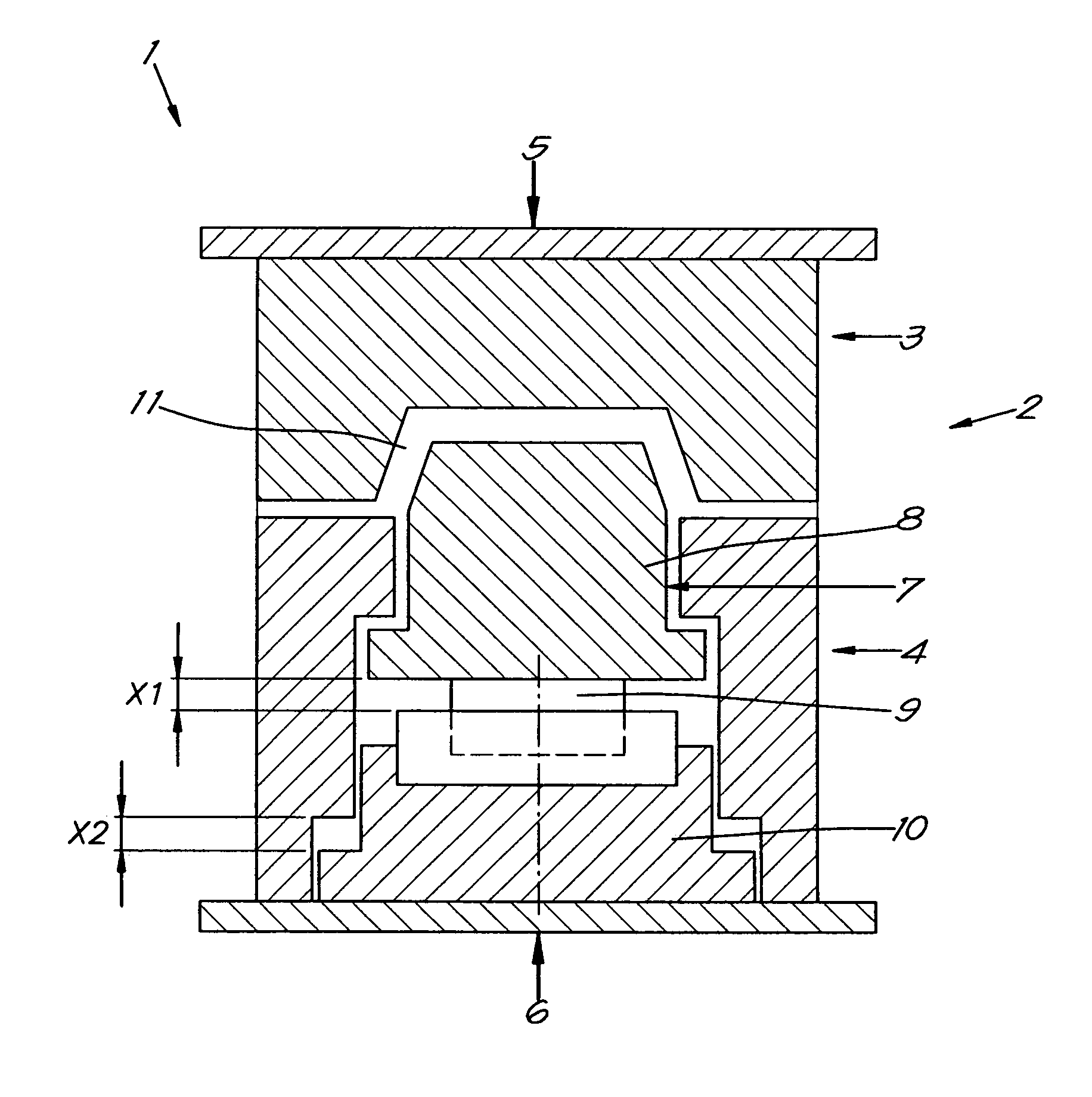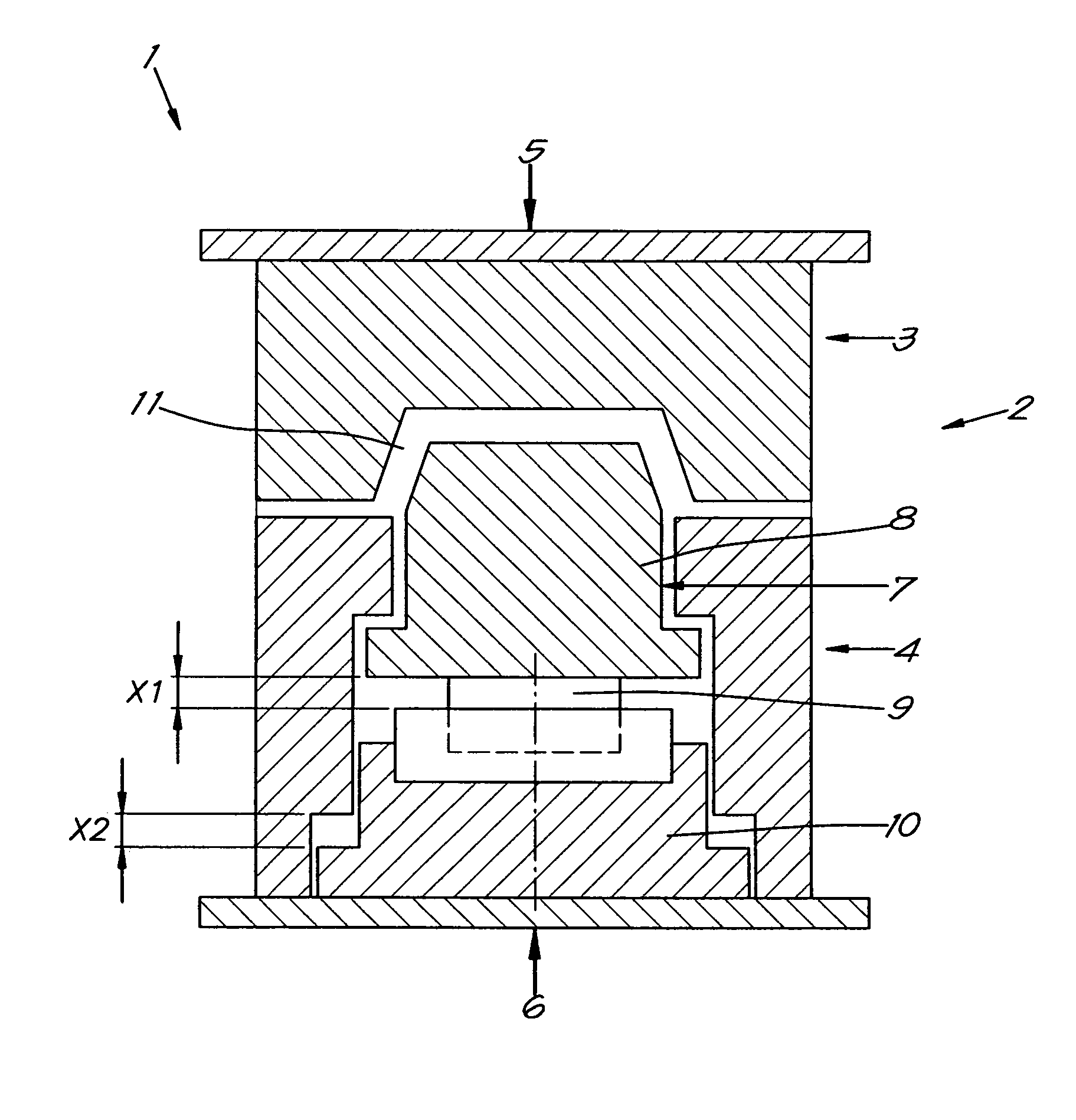Moulding device
a moulding device and moulding technology, applied in the field of moulding equipment, can solve the problems of limited control of the process, inbuilt stress and quality loss of the product, and the limit of the maximum flow path and material wall thickness that can be achieved, so as to improve the quality of the part, improve the flow control, and prolong the flow path
- Summary
- Abstract
- Description
- Claims
- Application Information
AI Technical Summary
Benefits of technology
Problems solved by technology
Method used
Image
Examples
Embodiment Construction
[0052]FIG. 1 shows a cross section of the equipment 1, consisting of a mould 2 which in turn consists of two part forms or mould halves 3 and 4, which are held closed together by a closing force indicated by the arrows 5 and 6.
[0053]In the mould half 4 is housed the moveable mould part 7.
[0054]The moveable mould part 7 is in turn composed of a moveable core 8, which can reach into the other mould half 3, and an adjustable positioning device that is simply shown here by a hydraulic cylinder 9, whereby the core 8 can be moved up and back over a variable distance X1 or just kept in position.
[0055]A second adjustable positioning device, here simply shown by an hydraulic cylinder 10, can function separately or in combination with the cylinder 9, to position the moveable core 8 back to its initial or starting position via controlled movement over the distance X2.
[0056]Between the moveable core 8 and the mould half 3 a cavity 11 is defined, the form of which is equal to that of the final p...
PUM
| Property | Measurement | Unit |
|---|---|---|
| thickness | aaaaa | aaaaa |
| pressure | aaaaa | aaaaa |
| size | aaaaa | aaaaa |
Abstract
Description
Claims
Application Information
 Login to View More
Login to View More - R&D
- Intellectual Property
- Life Sciences
- Materials
- Tech Scout
- Unparalleled Data Quality
- Higher Quality Content
- 60% Fewer Hallucinations
Browse by: Latest US Patents, China's latest patents, Technical Efficacy Thesaurus, Application Domain, Technology Topic, Popular Technical Reports.
© 2025 PatSnap. All rights reserved.Legal|Privacy policy|Modern Slavery Act Transparency Statement|Sitemap|About US| Contact US: help@patsnap.com


